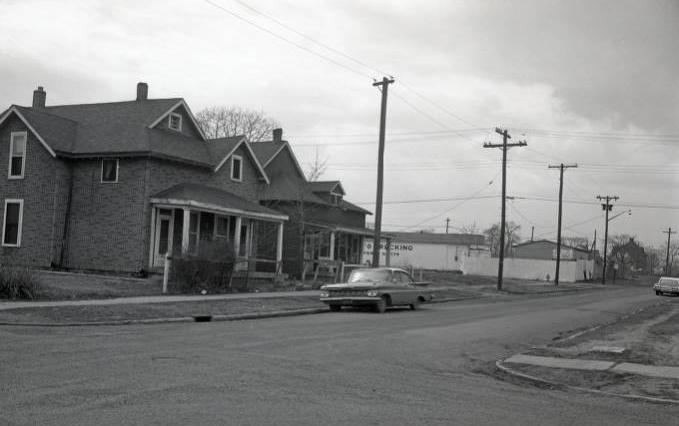Stringtown is a westside neighborhood roughly bounded by Michigan, White River Parkway, Washington, and Belmont streets.

In 1833, the and bridge were extended to the west bank of the . Reportedly, a string of homes sprang up along the road, giving the area its name. Stringtown was an agricultural community until the railroads located shops and rail lines there in the 1870s. Then, German and Irish immigrants who worked for the railroads built modest, single-family cottages, most of them in the Carpenter-Builder style, on narrow lots. Indianapolis annexed the working-class community in 1897.
The flood of 1913 devastated Stringtown when the levee broke and homes were inundated. In the years following the flood, the ethnic character of the neighborhood changed. As the and moved out, white Protestants from the American South moved in to purchase or rent homes. The , along with other nearby industries, employed these new residents.
By the 1960s, Stringtown declined as industries shut down, unemployment soared, and housing stock deteriorated. Ten years later, about 4,500 residents lived in the area. The expansion of and the displaced residents and industries in the 1980s. Stringtown continued to struggle with several social and economic problems in the early 1990s.
Neighborhood and community groups in the 2000s have worked hard to combat these problems for the more than 2,000 residents of the area. The Stringtown neighborhood also has been targeted for redevelopment. By 2020, proposals for development included retail shops, apartments, townhomes, and condominiums with rooftop decks and views of the White River, the Indianapolis Zoo, and downtown Indianapolis skyline. Real estate developers also identified high-tech internet infrastructure along railroad lines in the area as an attraction for commerce and industry.

Help improve this entry
Contribute information, offer corrections, suggest images.
You can also recommend new entries related to this topic.